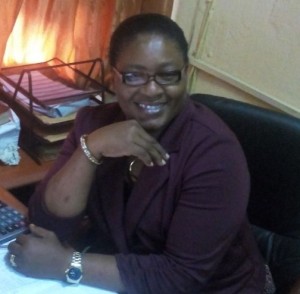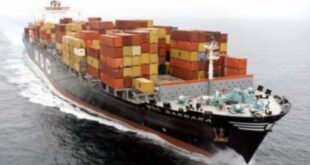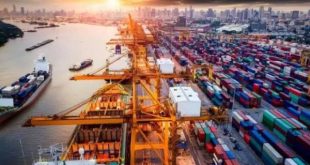
Mrs Macfoy Rollens is the Executive Director of Ocean Deep Services; a ship crewing, ship management and seafarers’ training organization. In this week’s edition of your education page, she explains the necessary modalities for a prospective seafarer to take before he or she can become one. Excerpts
What is seafaring?

Seafaring in maritime language is a compound word, it encompasses all personel that work in the vessel and at the jetty, both inside and outside the vessel and at the jetty. Now, we have the popular people we call the seafarers whom most people think and know as seafarers. These are the ones that work on board the vessels; they are particularly known as merchant navy. Their business is to work in the vessel and among them are the Captain, the Chief Officer, Chief Engineer, Second Officer, Third Officer, Able Body Seamen and Ordinary Seamen. The Ordinary Seamen are the lowest cadre among the people that work on board vessel.
What are the jobs of each of the categories?

The Chief Engineer is in charge of the engine, he owns the engine room, and without the engine room, the vessel cannot move. You have to make sure that the two engines are working, they are up and doing, they are disseminating when they are supposed to be disseminating. The engine is like the heart, if the heart stops working, other parts of the body will not be able to move. If the engine is not in a good state, the Captain cannot do anything.
The Captain and Chief Officer are the navigational officers and of course, if the engines are working well and the Captain is not a good one, he cannot read the chart, cannot navigate properly, they cannot go anywhere. In the engine room, you have the second, third engineers and the others. These are the personnel that work in the engine room depending on how big the vessel is. Sometimes, you have only two people in the engine room or more depending on the size of the engine.
You have the AB who works closely with the deck officer; they are in charge of so many things. In fact, the Able Body (AB) seamen report to them. The AB are the ones who help to do so many things when the ship is about to berth. We call them Able Body seamen because the work they do is enormous; any mistake from them can cause a ship a lot.
Then we have the Ordinary Seamen (OS) who are in charge of cleanliness, taking care of the ship, making sure that the vessel is not slippery because the vessel is made of iron. They have to place things at the right place, make sure that things are not placed where they are not supposed to be especially the pathway and the gangway; this is to avoid danger and loss of life. They can also assist the AB to do their jobs. In a nutshell, these are the categories of seafarers and what goes on in a ship.
We also have the fishing trawlers but what most people know is that a lot of ships carry PMS, AGO. The fish trawlers go to the ocean to fish and so on. They too are seafarers.
Then we the dock workers, the stevedores; these also are seafarers because when a vessel berths at any jetty, they are in charge of discharging. They work hand in hand with vessel personnel, they take care of the jetty, they make sure that connections are made to the tank farm.
What are the necessary steps a prospective seafarer needs to take to become a seafarer?
There are two ways to it. One, we have those that rose through the ranks. In the time past, when Nigeria had not come into the limelight of maritime work, we had the ones who started as creek boys, they paddled the canoe, they know all the nooks and corner of the sea, they were more or less navigators themselves, they knew every route on the water and of course, these ones started learning by experience.
When the issue of certification started coming in, they started to acquire certificates too. It is like a school certificate holder joining a company and has worked with the company for a long time, has known so much about the company that he is promoted to a supervisor or a departmental head by virtue of his professionalism. These are the people we call artisans, they know the job very well but do not have the formal education. This set of people are very good and what is happening now is that as you have people who take professional courses to become accountants, they too take some courses in the maritime to rise to the level of captains. They are being sent for short courses and we are trying to get them to the level where they can interact with the world. As a matter of fact, most of them can sail dead ships because they know so much about the job.
Two, we have the educational way; the ones that finished their school certificate education and decided to go to Maritime Academy, Oron or any of the maritime universities or go through the Federal Institute of Marine Technology or a polytechnic to study Marine Engineering or Nautical Science. If you want to categorise them, it is usually engine and deck. When talking about the engine, they are the navigators. In FIMT, there are some that did a short course, these are navigators. If you are in the deck, you can become AB and from there, you begin to rise to third officer and gradually you will be rising.
You have the Marine Engineer Assistant (MEA), the course is also run at own or FIMT, it is also a six month course. At the end of the course, you must put them in ships to show them what the engine looks like as well as through other parts. In the process, you can sail a little bit and come back, you can do that a couple of times before they graduate so that when they are not total novice, they must have had pre-knowledge of the experience.
Those that do OND are expected to come out and do industrial attachment for eighteen months on vessel, we call it sea time. After that, they go back and complete their NHD which will now be a full degree. Those ones are in all cadres. We also have Maritime Transport Management, this course is in own too. It is for those who want to work aground. It is not only those that work in ship that go into the ship, I also go onshore when there is a problem with any ship I am handling. You have to be taught the technique of what to do and what not to do. Boarding officers go on board, marine superintendents go on board daily, they oversee all what happens in the deck. If you are working with a shipping company, and you don’t have this knowledge, you may not be able to climb the gangway, you can slip and fall. The safety professionals too will make sure that there is safety in place; they make sure you are with your helmet, safety boots, safety jacket and properly dressed before boarding the vessel because if you are not properly dressed safety-wise, anything can happen and mind you, all the ship body is steel, if you slip, you can die.
What is the health requirement of a prospective seafarer?
Majorly, we have accredited medical tests by Nigeria Maritime Administration and Safety Agency (NIMASA) before you can board a vessel. The things you ought to do are there, you need to check your heart beat, you need to check your body to know if you are diabetic, you check your vision level, your hearing has to be in place because you have to be able to hear properly. There is so much health guidelines outlined by NIMASA that the people have to go through. If you come out good, you are given a medical certificate to show that you are fit to go on board the vessel. And for sea phobia, it is for everybody, if you go on board a vessel, before it will sail 200 nautical miles, you will have sea phobia. Some people throw up, some will be uncomfortable. Even if you have been sailing for a long time and you leave the sea for like six months, by the time you come back, you will still develop the phobia.
 MMS PLUS NG – Maritime, Aviation, Business, Oil and Gas News Online Newspaper with coverage in Maritime, Oil and Gas, Aviation, Power and Energy as well as Financial News
MMS PLUS NG – Maritime, Aviation, Business, Oil and Gas News Online Newspaper with coverage in Maritime, Oil and Gas, Aviation, Power and Energy as well as Financial News









